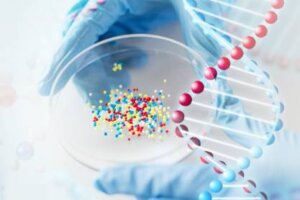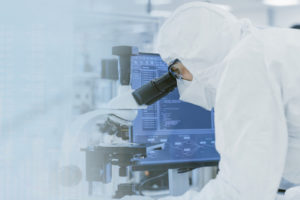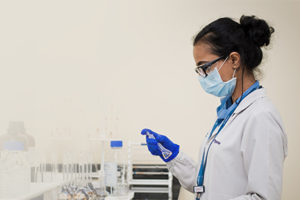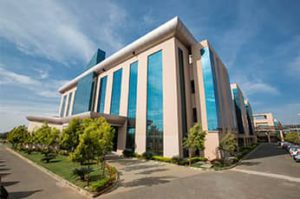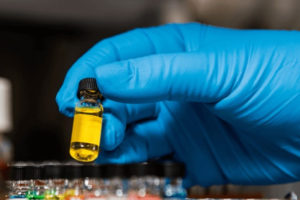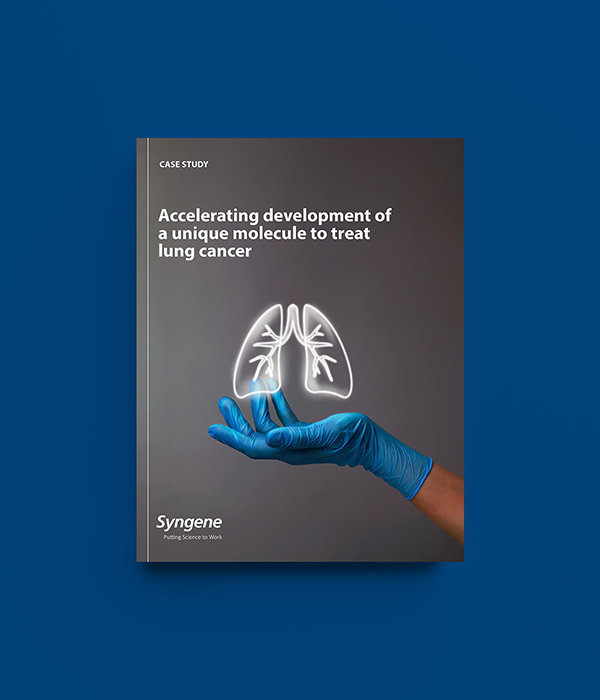Overview
A leading pharma company had conceived a unique molecule for targeted treatment of locally advanced lung cancer with a specific mutation. The company partnered with Syngene to provide the drug substance and drug product for tox studies.
Our team worked collaboratively with the company to develop and supply the drug substance and drug product starting from gram scale to kilo scale while ensuring the required quality levels for both. We successfully delivered a kilo-scale of the API required for tox studies and first-in-human (FIH) clinical trials. Further, we optimized and demonstrated the process by producing 100 kg batches of the API and delivered it to the client.
The pharma company has since received accelerated approval from the FDA to begin commercial manufacturing of the novel molecule as a tablet formulation.
The requirement
The pharma company had conceived a unique molecule for targeted treatment of locally advanced lung cancer with a specific mutation.
The company had earlier partnered with Syngene to develop and manufacture a chemical compound to treat cancer. Hence, they were well aware of Syngene’s competency as an experienced and trusted partner. When the requirement arose to develop the process for their novel therapeutic for yet another drug for treating cancer, they decided to collaborate with us.
We were tasked with providing the drug substance and drug product for their molecule to conduct tox and FIH studies.
The challenge
Generating final material for Tox studies
Working under stringent timelines, we started to develop the initial process for producing the drug substance on a gram scale. The first challenge was to isolate the drug substance by following the medicinal chemistry route and making enough material to carry out Tox studies. The process involved column chromatography at all stages of synthesis and an overall yield of 6 %.
Isomer generation
The compound comprised four isomers across four intermediate and one final stage during development. The pharma company wanted us to generate sufficient quantities of the isomers from scratch to be used as markers while releasing the intermediates and API material. Synthesis and isolation of these isomers were difficult as the chemistry involved the usage of cyanide, heterogenous catalyst reactions, and having to deal with stability issues.
Isolation of intermediates as solids
We were required to isolate solid intermediates at each stage of development. This posed a challenge because the intermediates were gummy liquids, and the isolation had to be done during scale-up operations.
Polymorph generation
In the final stage of API generation/ manufacturing, a major form-2 polymorph had to be isolated. Isolating form-2 polymorph during bulk manufacturing activity consistently is a difficult process.
Replacing high-cost chemicals
We were tasked with replacing high-cost materials like catalysts, inorganic bases, ligands, and coupling reagents with low-cost substitutes, including process optimization. Additionally, we were required to ensure these changes did not compromise the final product quality, efficacy, and timelines
Analytical method development
We were required to follow and develop stringent analytical methods to conform to regulatory requirements. We were also assigned to develop and validate the analytical method for powder X-ray diffraction (PXRD) and particle size distribution (PSD).
The solution
Our team worked collaboratively with the pharma company to develop and supply the drug substance — moving from gram scale to kilo scale while ensuring the required quality levels for the final drug product.
The biggest challenge we overcame was isolating intermediates, where the product was a gummy liquid. We implemented continuous process improvement and isolated the intermediates as solids by converting the free base into salt with good yield. This process tremendously reduced manufacturing cycle time. As a result, overall efficiency and isolated yield improved from 6 % to 30 %.
Our team also synthesized all the isomers, thereby enabling the characterization of the API, method development, and validation. We also replaced high-cost reagents with low-cost materials without compromising the quality or efficacy of the final drug.
Following the isolation, our analytical team worked with the client team to complete 70+ analytical method validations for intermediates and APIs required to progress the drug to the manufacturing stage. Our analytical team also generated the required criteria for a limit of quantification (LOQ) and limit of detection (LOD) for PXRD and PSD methods, preparatory to API manufacturing.
Finally, following the concerted efforts of our technical teams comprising chemical development, analytical development, and quality, we successfully delivered a kilo-scale of the API required for tox studies and clinical trials. Further, we demonstrated the manufacturing process for producing a single 100 kg batch of API and delivered it to the client for tablet formulation.
Conclusion
The pharma company went on to receive accelerated approval from the FDA to begin commercial manufacturing of their novel molecule as a tablet formulation. Meanwhile, we successfully completed the validation batches and are currently supporting the client in the commercial manufacturing of their novel molecule to treat lung cancer.
To learn more about our capabilities in drug substance, and drug product development and manufacturing, contact our experts.

